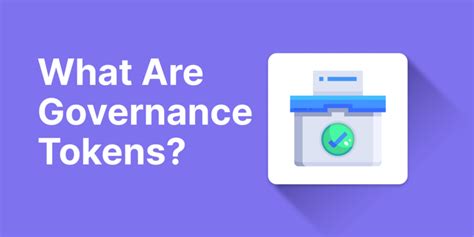Growth of the ruling tokens: A new era for Bitcoin
In recent years, Bitcoin (BTC) has undergone a significant transformation, determined by the increasing demand for decentralized and community -led cryptocurrency. A key innovation that has gained traction is the concept of ruling chips, which changes the face of cryptocurrency development and implementation.
What are the ruling chips?
The ruling chips, also known as the useful tokens or tokens, are digital active that represent a demand on the process of creating a blockchain network. They can be used to participate in voting decisions, to manage decentralized applications (DAPPS) or even win rewards for their holders. In the context of Bitcoin, the ruling chips have been incorporated into various projects and initiatives aimed at improving the cryptocurrency ecosystem.
Benefits of government tokens
The ruling chips offer several benefits that have significant implications for the future Bitcoin:
- Increased adoption : Giving users with a network participation, governing chips stimulate more people to participate in the development process, which leads to increased adoption and use.
- Improved decentralization : Governing chips allow decentralized decisions, reducing the influence of central authorities and promoting community -based governance.
- improved transparency : With voting rights related to moved assets, users are more likely to engage with blockchain network, increasing transparency and confidence in the system.
- Reward structure : Governing chips often reward holders with a portion of new block rewards or transaction fees, creating a financial incentive for participation.
Examples from the real world
Several notable projects have incorporated government tokens in their development:
- Binance Coin (BNB) : BNB is a native cryptocurrency on the intelligent Binance chain, which is owned by a community -based voting mechanism. This has led to increased network adoption and use.
- UNISWAP Government : The uniswap’s governing token allows holders to participate in the decision -making processes related to the development and growth of the protocol.
- Cosmos (atom) : The atom is a decentralized platform that allows the interoperability between different blockchain networks. His government token, Atom, gives users a participation in the network development.
challenges and limitations
While governing chips have the potential to revolutionize cryptocurrency development, there are also challenges and limitations to consider:
- Regulatory uncertainty : The regulatory landscape for ruling chips continues to evolve, which makes it essential for the browsing projects of these complexities.
- Voting mechanics : Ensuring the security and integrity of the voting mechanisms is crucial to prevent handling or abuse.
- Scalability
: The ruling chips can be calculated intensive, which can have an impact on scalability and capacity to use.
Conclusion

The ruling chips are a significant innovation in the cryptocurrency space, offering numerous benefits for the Bitcoin ecosystem. As the market continues to evolve, we can expect to see more projects that incorporate ruling chips into their development. While there are challenges, the potential rewards of increased adoption, making decentralized decisions and improved transparency make the ruling chips an interesting area.
Recommended reading
- “Increased governance of cryptocurrencies” by Bloomberg
- “How the ruling chips change the future Bitcoin” by Coindesk
- “A deep dive in ruling tokens: benefits, risks and implementation” by COCTINEGRAPH
Note: This article is intended to provide a general image of the concept of ruling chips and their potential impact on the cryptocurrency market.

